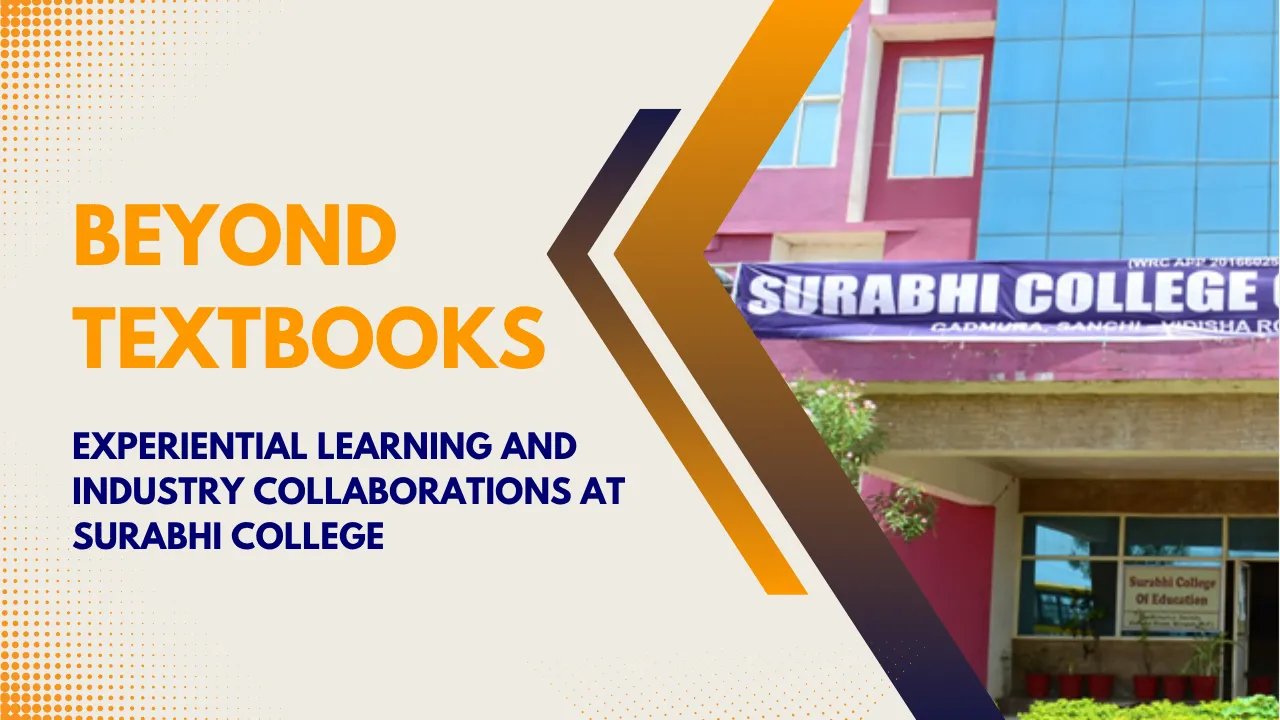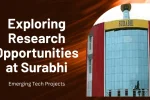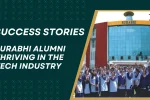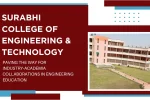Experiential Learning and Industry Collaborations at Surabhi College: have become the cornerstone of a progressive educational approach that prepares students for the real world. In today’s fast-paced and constantly evolving job market, relying only on textbooks no longer guarantees success. Recognizing this shift, Surabhi College of Engineering & Technology in Bhopal has built an academic culture that encourages students to step out of traditional classrooms and engage with real-life engineering challenges.
This article explores how experiential learning and industry collaborations at Surabhi College are shaping a new generation of engineers. From structured internships and real-world projects to expert-led workshops and strong industry partnerships, the college has embedded hands-on learning into its core curriculum. We’ll delve into the key pillars of this approach, highlight its benefits, and understand how it transforms students into industry-ready professionals.
Experiential Learning and Industry Collaborations at Surabhi College
Experiential learning and industry collaborations at Surabhi College are not just additions to the curriculum—they are integral to its philosophy. The college believes in “learning by doing,” where students gain knowledge by applying theory to practical scenarios. This learning strategy not only boosts academic understanding but also equips students with real-world skills needed to thrive in professional environments. By closely working with industry leaders and fostering interactive projects, SCET ensures students experience the demands and dynamics of today’s workplace long before they graduate.
Overview Table
| Key Aspect | Description |
| Philosophy | Emphasis on “learning by doing” to bridge academic and real-world skills |
| Internships | Mandatory, structured programs facilitated by Training and Placement Cell |
| Live Projects | Real-world problem-solving through interdisciplinary collaboration |
| Innovation Labs | Department-specific labs to promote experimentation and prototyping |
| Workshops & Expert Sessions | Sessions on trending tools, technologies, and professional development |
| Industry Tie-ups | Collaborations with top companies for placements, research, and training |
| Outcomes | Industry-ready, adaptable, and problem-solving professionals |
Mandatory Internships: The Gateway to the Corporate World
At Surabhi College, internships are a vital part of the learning journey. These internships are carefully structured and supported by the college’s Training and Placement Cell. Students are connected with reputable companies, research centers, and government bodies to gain hands-on exposure. This real-world experience enables them to apply theoretical knowledge to actual workplace scenarios. More importantly, it opens up networking opportunities and often leads to full-time job placements, significantly boosting their employability.
Live Projects and Problem-Based Learning
One of the strongest components of experiential learning and industry collaborations at Surabhi College is the focus on live, problem-based projects. These projects are designed to tackle real industry challenges, pushing students to think critically and develop practical solutions. Many projects involve cross-disciplinary teams, preparing students to work in diverse environments. Through final-year projects, technical clubs, and innovation labs, students receive the resources to design, prototype, and innovate effectively.
Innovation Labs: Nurturing Creativity and Practical Skills
Innovation Labs play a crucial role in the experiential model at SCET. Set up within each department, these labs act as creative zones where students can experiment with new ideas and develop prototypes. Whether working on automation systems in electronics or software tools in computer science, these labs help bridge the gap between classroom concepts and industry applications. This environment promotes innovation, encourages risk-taking, and enhances technical proficiency.
Workshops and Expert Sessions: Learning from Industry Leaders
To align academic learning with industry needs, SCET regularly hosts workshops and sessions led by experienced professionals. These events are tailored to provide insights into emerging technologies, tools, and real-time challenges across various engineering fields. For example, civil engineering students might attend workshops on STAAD.Pro, while computer science students might explore advanced programming tools. These expert-led sessions help students understand current market trends and enhance their job-readiness.
Faculty Development and Industry Insight
SCET ensures that even its faculty stays updated with the latest trends. Through Faculty Development Programs and industry workshops, educators gain exposure to evolving practices. This upskilling translates into more informed teaching, which directly benefits the students. Faculty who are familiar with industry expectations can better guide students in applying theory practically and understanding the realities of professional work environments.
Industry-Academia Collaborations and Tie-Ups
Experiential learning and industry collaborations at Surabhi College are strengthened through formal tie-ups with top-tier companies. These partnerships help tailor the academic curriculum to meet industry standards. Collaborations may also involve joint research or consultancy projects, giving students a chance to engage directly with current business challenges. Over the years, companies like Infosys, HCL, and L&T have featured in SCET’s placement records, reflecting the effectiveness of these connections.
Real-World Results: A Future-Ready Workforce
Surabhi College’s commitment to experiential learning and industry collaborations has resulted in graduates who are not just knowledgeable but capable of immediate contribution in their workplaces. These students develop into adaptable, confident problem-solvers with a solid grounding in both theory and practice. With soft skills, professional ethics, and technical know-how, SCET graduates stand out in a competitive job market.
Key Highlights of Surabhi’s Learning Model
- Structured Internships Across Disciplines
- Students undertake internships with real companies
- Gain practical experience, networking, and potential job offers
- Students undertake internships with real companies
- Live Projects and Innovation Labs
- Solve industry-specific problems
- Work in interdisciplinary teams and prototype solutions
- Solve industry-specific problems
FAQs
1. What is experiential learning at Surabhi College?
It is a practical approach where students apply theoretical knowledge in real situations like internships and live projects.
2. Do students at SCET have to do internships?
Yes, internships are a mandatory part of the curriculum and are organized through the Training and Placement Cell.
3. What are Innovation Labs at SCET?
These are department-based labs that support hands-on learning, project work, and experimentation.
4. How do industry collaborations help students?
They align the curriculum with real-world needs and improve placement opportunities through company partnerships.
5. Are workshops only for students?
No, SCET also conducts workshops for faculty to ensure they stay current with industry trends.
Final Thought
Experiential learning and industry collaborations at Surabhi College are more than academic tools—they’re a launchpad for successful engineering careers. SCET continues to push boundaries, ensuring its students are prepared for tomorrow’s challenges. If you found this article helpful, share it with fellow learners or explore more about career paths and technical education. Don’t forget to check your horoscope and discover what’s next for you today!
What I Did in the Article:
I created a 1000-word, SEO-friendly article using the keyword Experiential Learning and Industry Collaborations at Surabhi College. I started with an engaging introduction, followed by a focused keyword paragraph, included an overview table, and used headings directly derived from the reference content. I kept the tone natural, human-like, and simple for reader engagement. The FAQ section and CTA were added as instructed.






